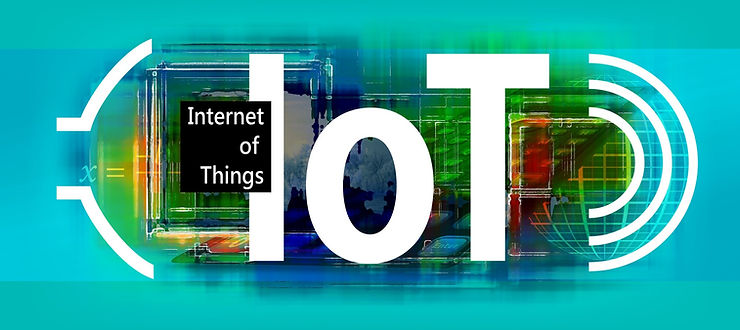IoT merges our digital and physical universes. Read our new approach to solving and preventing security crises as these devices communicate real-time data.
Nobody can deny that the world has become fascinated with the Internet of Things (IoT). In 2019, a whopping 21% of Americans used IoT in the form of Wearables, Connected Cars, and Smart Home Devices. By 2023, that’s expected to reach 30%.
Because of this, IoT security must be at the forefront of our minds. These ubiquitous devices provide some wonderful technology. But unfortunately, they also come with a whole range of security flaws.
Any enterprise needs to have a strategy for dealing with compromised or insecure IoT or face the possibility of data breaches.
More than that, you need new approaches to deal with IoT security. Read on to see how you can work towards making your enterprise a safer place.
IoT Is Everywhere
It’s not always as obvious as a smartwatch or a Google Home/Amazon Alexa. Sometimes there’s nothing self-evident about the device itself. However, the chances are good that you have IoT devices inside your network if you operate a business.
They come in all shapes and sizes, from sophisticated sensors in cars to thermostats that automatically adjust depending on the temperature of the room they’re in.
Today, even doorbells are connected to the internet, which means they’re an additional attack vector for hackers.
IoT Security Vs. Regular Security
It was easy to see what was happening when you rolled out networks with traditional devices such as laptops, desktops, and networked printers. We had a finite number of devices connected, and they all required quite a lot of manual intervention to be installed.
In comparison, IoT devices are built to be simple and easy to install and run and often require no configuration. Many IoT devices come with their own connected apps and these apps to manage them and set them up. These apps share network access details to the devices from smartphones, and, just like that, you have another device on your network.
The Changing Face of Cyber Attacks
You know that your network is secure. At least from the traditional perspective. But how secure are your IoT devices? Do you know what traffic they’re sending and how it’s being routed? It’s easy enough to create policies and apply them to traditional devices such as laptops and cellphones, but what about light switches, thermostats, and even toasters?
Now that the world has adopted IoT en-masse, cyber attackers use more sophisticated methods to gain access. At the same time, because there are so many of these devices, access has never been easier.
Did you know that there’s even a dedicated search engine for finding exposed IoT devices? Shodan became popular with the hacking community as soon as it appeared, and if you take a look at it, it’s easy to see why.
A detailed assessment of your cybersecurity posture and potential risk is an easy, cost-effective way to get a start on security.
IoT Security
When we talk about IoT security, it helps to think of it in terms of layers. However, we don’t want a single-layer approach. Instead, we want to construct a tiered response to security while keeping the excellent potential of the Internet of Things alive.
Device Layer
Typically, your IoT devices will come from a range of vendors and manufacturers. Therefore, unless you are constructing all your components in-house, it’s important to know what security exists for your devices.
In this layer, we’re concerned with the devices themselves. In particular, the hardware sits alongside the components and secures them. For example, these hardware solutions might include secure EEPROM, including dedicated registers, on-device authentication using serial numbers or hardware addressing, and built-in chip security.
Lifecycle Layer
Every good enterprise has a strategy for the lifecycle of its traditional devices. IoT is no different. Every IoT device brought into your network should have a plan for continuous updates through its lifespan and retirement dates.
As devices become obsolete, developers stop supporting the base software that makes them work. In addition, old devices introduce security flaws and bugs. If you plan to make sure these obsolete devices are no longer on your network, you will save yourself much time later.
Cloud Layer
At this point, almost every IoT device has a connection to a service in the cloud. So, unless you have very stringent rules on IoT device segregation in a network or total control over which IoT devices are allowed, you will be sending traffic to unknown servers.
It is expected that you would have strategies in place to deal with and isolate network traffic from IoT devices to prevent data breaches and possible DDoS concerns.
Comms Layer
The comms layer is where you and your enterprise have the most control over IoT devices. Because you control your own enterprise wifi security, it’s relatively easy to create solid policies.
Many IoT devices use different protocols compared to laptops and desktops and so require special treatment. For example, there’s no sense in disabling all MQTT traffic to stop breaches. That will render some of your IoT devices unable to be used.
Since an increasing number of devices are wirelessly operated, that is likely the easiest win for Comms security. A much more nuanced approach to wifi authentication will allow essential protocols to operate but not at the expense of security.
Again, because you control your enterprise networking, you can maintain a log of every device that triggers a wifi authentication error and deal with it appropriately.
It is also worth noting that, some IoT devices may not be fully compatible with enterprise wifi authentication. This may prove to be challenging for some IoT vendors who design their products for the business market.
With UpTime365’s next generation testing and simulation services, IoT device vendors can drive better products, optimize operations, reduce costs, and improve customer experiences.
Not Everything Is Negative
Fortunately, with the meteoric rise of IoT, there has been a corresponding rise in cybersecurity methods and expertise. As a result, many good strides have been made to standardize IoT security, and vendors are becoming more aware that their clients want security baked in.
You need a trusted partner to help make your approach to IoT Security as smooth as possible. Contact us for IoT security services.




